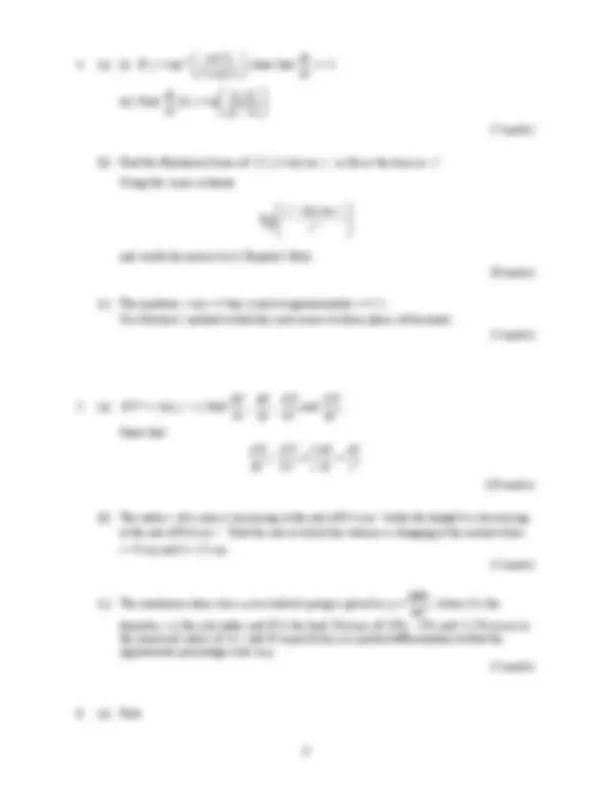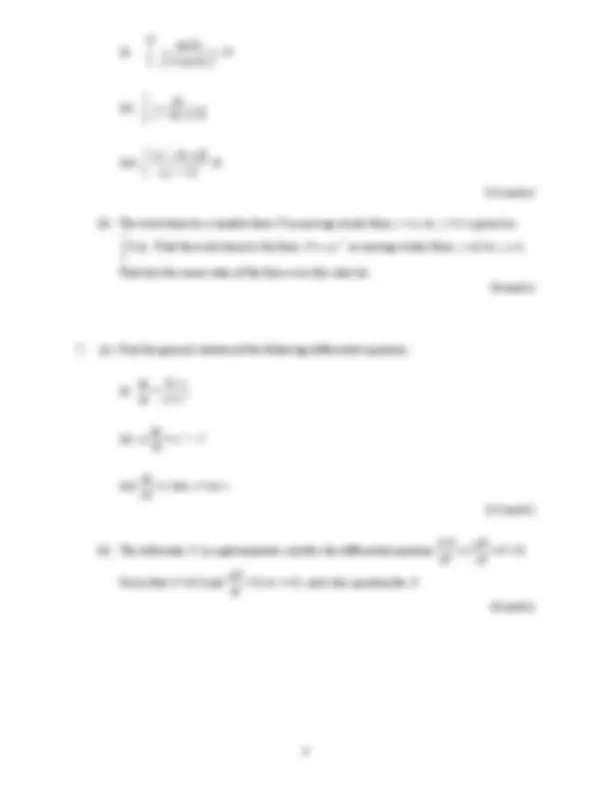




Study with the several resources on Docsity

Earn points by helping other students or get them with a premium plan


Prepare for your exams
Study with the several resources on Docsity

Earn points to download
Earn points by helping other students or get them with a premium plan
Community
Ask the community for help and clear up your study doubts
Discover the best universities in your country according to Docsity users
Free resources
Download our free guides on studying techniques, anxiety management strategies, and thesis advice from Docsity tutors
Main points of this past exam are: Cartesian Form, Matrices, Matrix, Gaussian Elimination, Values, System, Equations, Unique Solution, Resulting Equations, Determine
Typology: Exams
1 / 4

This page cannot be seen from the preview
Don't miss anything!



Answer TWO questions from Section A and THREE questions from Section B. All questions carry equal marks.
Examiners: Mr. G. O’Driscoll Mr. P. Clarke Prof. M. Gilchrist
and
find the matrix C such that AC = B + BT. (10 marks)
(b) Using Gaussian elimination find the values of k for which the system of equations
x y z
x y z
2
does not have a unique solution. For these values of k determine whether the resulting equations are consistent and, if so, find the solutions. (10 marks)
Hence prove that
Show also that if a + b is perpendicular to a − b then a = b (7 marks)
(b) A force F of magnitude 22N acts through the point Q (2, 3, − 6 ) in the direction of the vector 6 i − 2 j + 9 k. Find the moment of the force about the point P (1, 1, − 1 ). (5 marks)
(i) the area of the parallelogram with sides a and b (ii) a vector of magnitude 15 perpendicular to the plane containing a and b
(8 marks)
2 2 2 z 1 (^) + z 2 (^) = z 1 (^) − z 2 (5 marks)
(b) (i) Express 8 1 3
z j
in the form x + jy
(ii) Find the modulus and argument of z and hence express z in polar form (iii) Using De Moivre’s theorem find the cube roots of (^) z and express the answers in Cartesian form. (8 marks)
(c) Find the complex number z such that
z = π.
Find ez. (7 marks)
(i)
3 2 0
sin 3 2 cos 3
x (^) dx x
π ∫ +
(ii)
8 2 4 6 25
dx ∫ x − x +
(iii)
(^4 ) 2 3
x x (^) dx x x
∫ −
(14 marks)
(b) The work done by a variable force F in moving a body from x = a to x = b is given by b
a ∫ F dx. Find the work done by the force^^ F^ =^ xe^2 x in moving a body from^ x^ =^0 to^ x^ =^3. Find also the mean value of the force over this interval. (6 marks)
(i) (^3)
2 1
x
x y dx
dy
(ii) xy dy y^2 x^2 dx
(iii)^ dy^ y tan x cos x dx
(14 marks)
2 2 2 0
d d dt dt
dt
(6 marks)